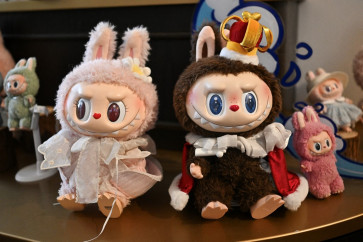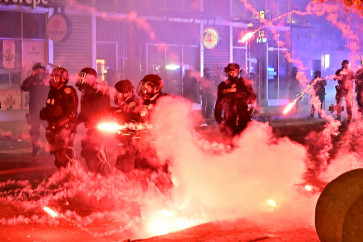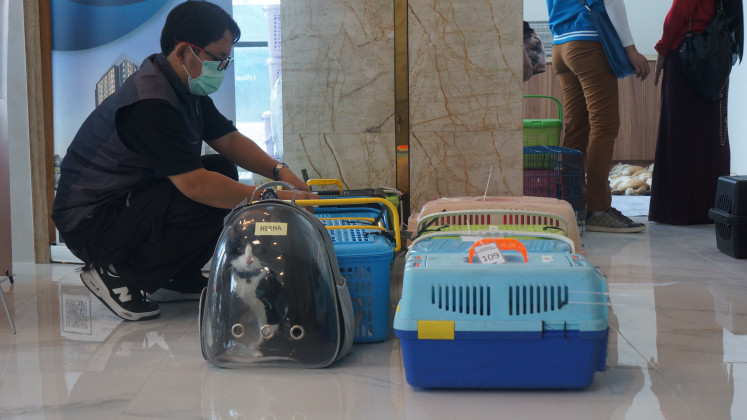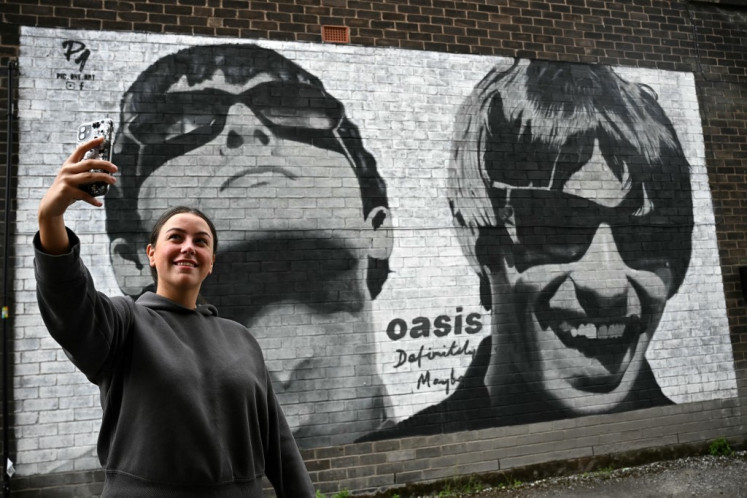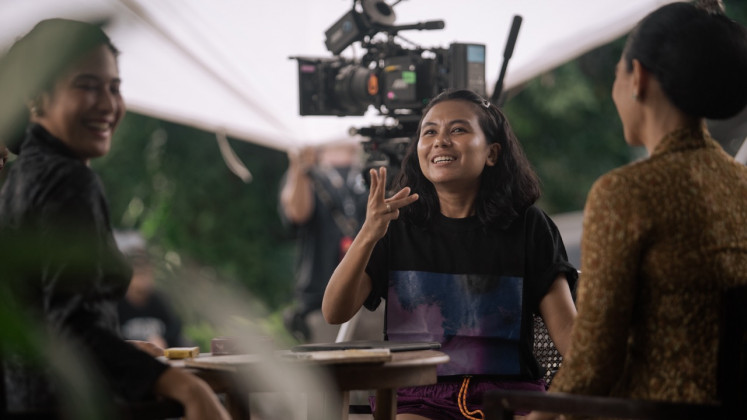Popular Reads
Top Results
Can't find what you're looking for?
View all search resultsPopular Reads
Top Results
Can't find what you're looking for?
View all search resultsIswanto Soerjanto: His cameraless explorations
Iswanto Soerjanto may be willing to give up his camera but that doesn’t mean he’ll give up photography.
Change text size
Gift Premium Articles
to Anyone
 Personal: The Day I Was Born, cyanotype on 51 pieces of aquarelle paper, marks the current age of Iswanto Soerjanto. (JP/Yuliasri Perdani)
Personal: The Day I Was Born, cyanotype on 51 pieces of aquarelle paper, marks the current age of Iswanto Soerjanto. (JP/Yuliasri Perdani)
W
ith the help of honey, sun and light-sensitive papers, Iswanto Soerjanto goes on a cameraless exploration, producing works on display at his first solo exhibition, titled “RE-DEFINITION” at Bale Tonggoh, Selasar Soenaryo in Bandung, West Java.
Among the artwork being exhibited until April 30 is a stand-out installation called Transformative Moments. It is a line of hanging glass bottles filled with alkaline and acidic liquids that endlessly drip onto three photo papers.
Honey that covers the photo papers slowly reacts with the chemical substances and the surrounding light, creating unpredictable patterns on the papers.
The piece is based on Iswanto’s contemplation of the Zen Buddhism teaching of uncertainty, impermanence and constant change.
“We should not think of our final destination because it will be the beginning of our woes. If we accept those three things, we will continue going with the flow peacefully,” the Jakarta-based artist explains.
In fact, the rest of Iswanto’s artwork wholeheartedly embrace uncertainty and change.
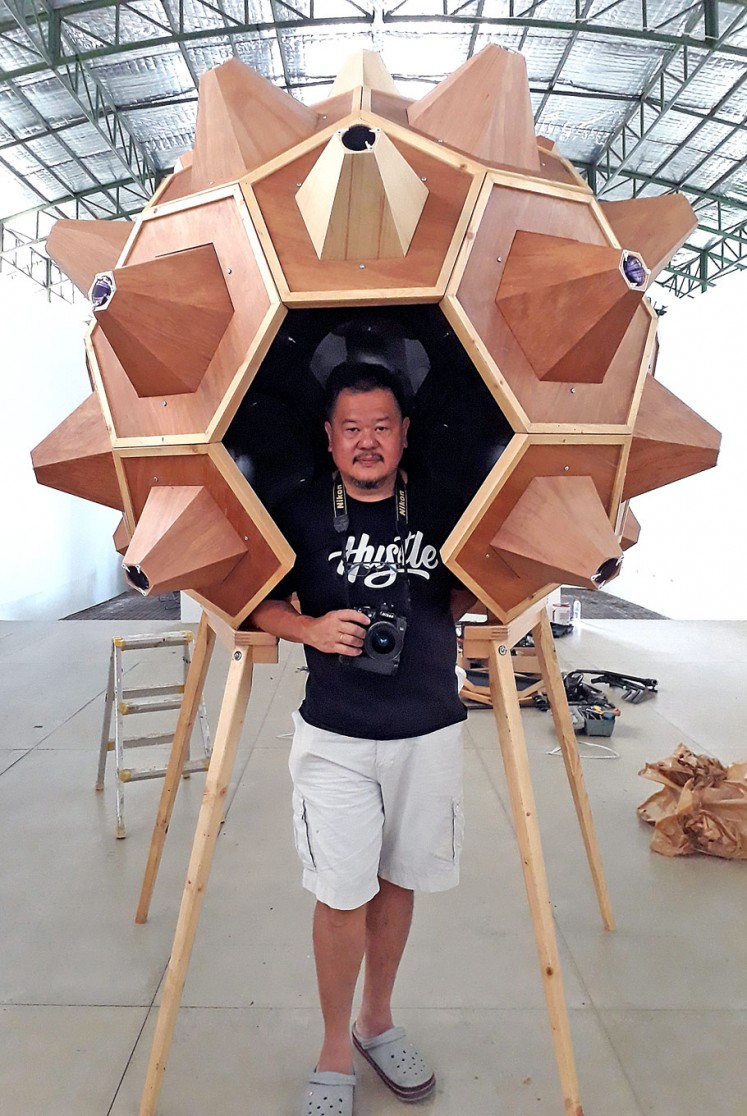
He creates the image on the photo papers by exposing them to a certain amount of sunlight, artificial light and chemicals. The dots, line and circle patterns were created by masking the papers with shaped papers.
As curator Argus FS pointed out, Iswanto had limited control over how the chemical reactions shaped the tone and composition of the images. “Iswanto Soerjanto’s cameraless images lean toward meditative practices through their abstract imageries and tonal changes,” he says.
The chemical reactions continued as the artwork reached the exhibition space. Iswanto does not apply fixer to the photo paper, resulting in the abstract images to change in color and shape depending on the humidity and light surrounding them.
The abstract black-and-white image in Line Meditations #3, for instance, slowly becomes bolder and develops silver hues. Meanwhile, another artwork gets brighter, revealing its sublime strokes and patterns that were once hidden.
The changing nature of his artwork offers an interesting experience to visitors, as they will see slightly different artwork depending on the day of their visit.
His five-year exploration of cameraless photography enables Iswanto to employ different techniques to create images on the light-sensitive paper.
With The Day I Was Born, he created layers of circles on 51 pieces of aquarelle paper — marking Iswanto’s age, through cyanotype — an old monochrome photographic printing process that produces a cyan-blue print.

Iswanto created overlapping strokes on silver gelatin print in Transformation#3 through chemigram, a technique that involves resistant material on the light-sensitive paper — similar to the use of wax in batik works.
The exhibited works stand in contrast with the current photography scene that is dominated by digital gadgets and process.
“Back then, someone needed three things to be a photographer: money, intelligence and patience,” said Iswanto, who studied photography at Brooks Institute of Photography in California in 1988 and became a professional commercial photographer since 1990.
”With the presence of DSLR and a smartphone camera, everyone can snap photos without involving many thoughts.” addedThis digital trend, he added, had trapped the current photography practice into a mere documentation process.
This concern prompted Iswanto to find the roots of photography. He became enthralled with the works of American visual artist Man Ray and Hungarian photographer László Moholy-Nagy, who experiment with photogram — a photographic process of exposing light-sensitive paper with objects laid on it
Iswanto later went on to discover more cameraless artists, such as Belgian artist Pierre Cordier, who developed the chemigram technique in 1956.
He began exploring cameraless techniques in his photo studio in South Jakarta, which has been turned into a dark room and an open space. The space enables Iswanto to create images with the help sunlight and artificial lights.
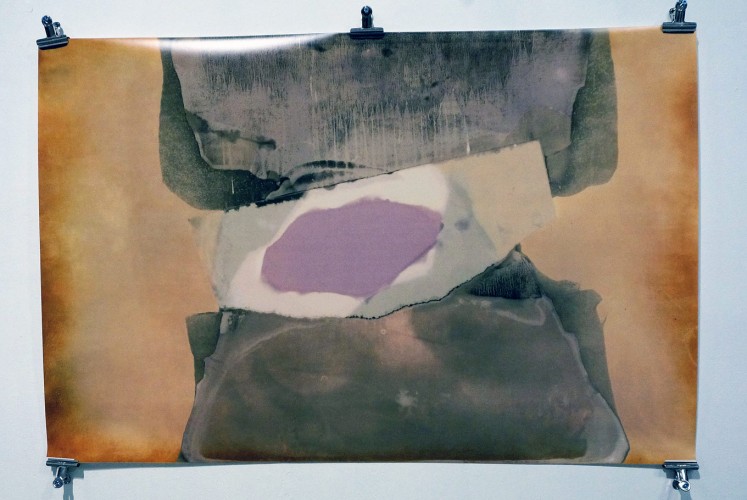
Iswanto draws inspiration from abstract expressionist artwork at the Museum of Modern Art (MoMA) and several New York art galleries, and also Dansaekhwa — a subtly layered, texturized monochrome painting style that arose in the 1970s in South Korea.
“[Dansaekhwa artists] they do everything repeatedly and consciously until they gained in-depthness. It is what I am trying to do here with ‘Line Meditations’,” Iswanto said, referring to his work.
While “RE-DEFINITION” is largely devoted to photographic exploration with the absence of a camera and lens, Iswanto has dedicated one installation to marvel at the inverted images of camera obscura — the basis of the early photographic camera.
A visitor stepping into the installation I Can See The World will see a series of images projected by scores of lenses around it.
The exhibition does more than explore old photographic techniques or experimenting with chemicals. In essence, it also reflects the transformation of an artist.
As celebrated artist Sunaryo told to Iswanto: “You said you threw away your camera. Your technique is changing, why did it happen? Because you have changed from the inside.”


